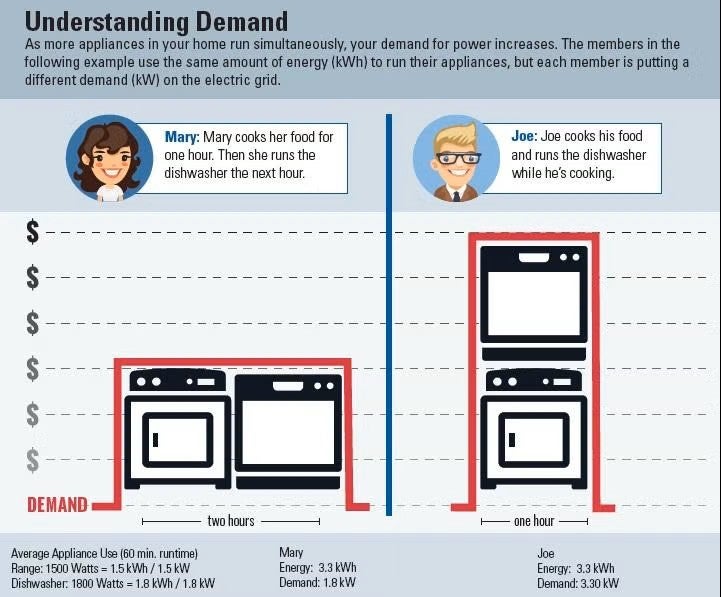Beginning in March of 2024, Eastern Illini Electric Cooperative has added a demand component for all rate classes.
A demand charge is a variable charge that’s measured in kilowatts (kW), and it’s based on the intensity at which electricity is used at a given time. Meaning, if your AC unit is running at the same time as your dishwasher, oven, dryer, or any other large electrical appliance, your electrical demand will be higher than if you were to spread out the use of those appliances throughout the day. If your electric use was a car, demand would be similar to the top speed of your vehicle during a trip and your kWh would be similar to the total miles driven on that trip.
The addition of the demand component coincides with a larger rate restructuring. We also lowered the kWh charge and updated our base charge.
Curious about how your electrical devices effect your demand? Check out our demand calculator to see how your daily habits will effect your bill!

